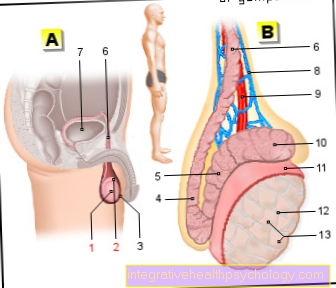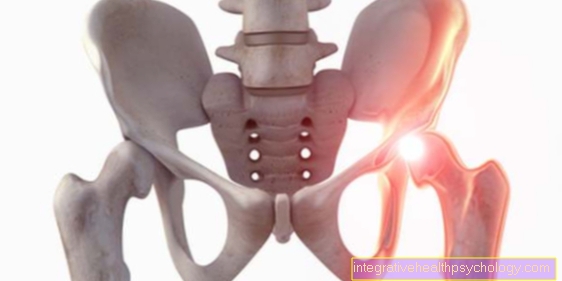Palliative medicine
What's this?
The aim of palliative medicine is not to cure a serious illness, nor is it to support or prolong life. Instead, the goal of palliative medicine is to alleviate the suffering of a chronically progressive disease that is fatal in a short period of time (usually less than a year). Death and the phase of dying are accepted as part of life, death is neither hastened nor delayed.

The aim is to improve the quality of life of the terminally ill patient and to enable life to be as active as possible. The focus is on relieving pain and other symptoms of illness, and the patient's psychological, social and spiritual needs are also integrated into the treatment. This is done, for example, through the support of the medical and nursing team by pastors or clergy. Palliative medicine also aims to improve the quality of life of relatives by providing them with advice and support.
Palliative care at home
Many seriously ill patients have the desire to spend the last phase of their life at home with their immediate family. In order to be able to fulfill this wish, it is necessary for the family to want to help with the care of the sick person and to be able to do so to the extent necessary. Support from the family doctor and an outpatient nursing service is also necessary; ideally, they also have experience in caring for dying patients and can also be reached at short notice in an emergency. Depending on the patient's need for care, they are grouped into a level of care, according to which the financial support of the health insurances for the care service is based. Some general practitioners have acquired the additional qualification in “palliative medicine” through further training and can provide palliative medical care.
In some places and communities there are also “palliative teams” that take care of the medical care of palliative patients. Before palliative medical treatment takes place at home, important key points should be discussed: How is the general procedure planned? How should you proceed in possible emergency situations? What (emergency) medication does the patient receive? This patient's will is recorded in a treatment plan and also offers doctors called in at short notice (representative of the family doctor, emergency doctor, etc.) a quick overview of the patient's situation.
Palliative medicine in the hospital
The best option for treatment using palliative medicine in the hospital is on a special palliative ward. Special features of the palliative care unit are the smaller number of beds and the better equipment with doctors and nursing staff. Admission to the palliative care unit is possible if the patient suffers from an incurable disease that will lead to death in the foreseeable future and is currently suffering from considerable symptoms and impairment of quality of life due to the physical situation. The patients must agree that they are no longer treated with the aim of extending their lives. The main goal of hospital palliative care is to control and alleviate symptoms of the disease. Long-term treatment is not possible, the aim is to return the patient to his home or to a hospice, for example.
Admission to the palliative care unit takes place through the hospitalization of the family doctor, the costs are borne by the respective health insurance company. Palliative medical treatment is also possible in a "normal" hospital ward: a specially trained team consisting of doctors, nurses and other professional groups (e.g. pastoral care, physiotherapist, social worker, etc.) supports the ward team in caring for terminally ill patients.
Palliative medicine in the hospice
The goal of the hospice movement, like the goal of palliative medicine, is to provide comprehensive care for terminally ill and dying patients in the final phase of the disease and to maintain the highest possible quality of life. Hospices can be organized as an inpatient (with overnight stay) or outpatient (as a kind of day clinic) and work very closely with palliative medicine facilities and doctors (e.g. general practitioners trained in palliative medicine) who support the hospice team with regular home visits. It is also you who determine the palliative medical treatment plan and discuss it with the patient and their relatives. The rooms in the hospice are bright and friendly and may also have a garden. The team consists of trained nurses and volunteer hospice helpers who have also completed special training. The daily routine in the hospice does not follow a fixed rhythm, but attempts are made to orientate itself to the wishes and needs of the residents. The aim of hospice care is to preserve the dignity of the dying patient and to recognize dying as part of life through an open approach to the issues of “dying” and so to cope with the dying process.
Who bears the costs for palliative medicine?
The stay in a palliative care unit is paid for in full by the health insurance company. If the patient and their family decide to stay in an inpatient or outpatient hospice, the long-term care insurance will cover part of the costs, depending on the level of care required. The health insurance also contributes to the costs, depending on the level of care and length of the hospice stay. The remaining amount must be covered by a personal contribution. Many hospices also receive donations or church funds in order to keep the patient's own contribution as low as possible. If the patient is cared for at home and is regularly visited by the family doctor or a palliative care team, the costs for these palliative medical visits are completely covered by the health insurance company.





























